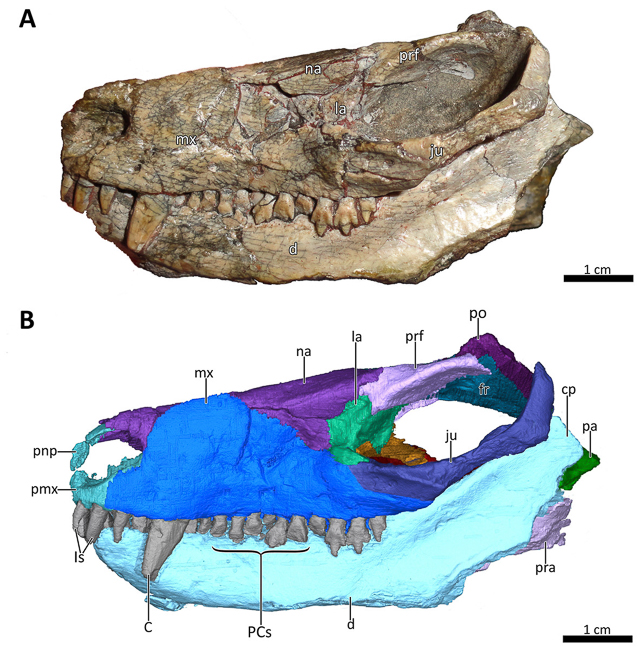Museum paleontologist redescribes Triassic protomammal using CT-data
For immediate release ‐ June 24, 2021
Contact: Jon Pishney, 919.707.8083. Images available upon request
The Museum’s Research Curator of Paleontology, Christian Kammerer, has co-authored a new paper: “Cranial anatomy of Bolotridon frerensis, an enigmatic cynodont from the Middle Triassic of South Africa, and its phylogenetic significance,” published in the journal PeerJ on June 16, 2021.
Bolotridon was historically one of the most poorly-known cynodonts (a group of synapsids, or “protomammals”, that include modern mammals as their descendants). Kammerer and colleagues used computed tomographic (CT) scanning to reveal new anatomical information in the only known Bolotridon skull, a specimen housed at the Bayerische Staatssammlung für Paläontologie und Geologie in Munich, Germany. Based on this new data, they were able to determine that Bolotridon was closely related to the most diverse and abundant group of Triassic cynodonts, the Eucynodontia. This provides important new context for the origins of eucynodonts, whose Triassic radiation culminated in the origin of mammals.
Full article: https://peerj.com/articles/11542/
 Partial skull of Bolotridon frerensis (top); CT reconstruction of Bolotridon skull (bottom). Photo: Christian Kammerer. Rendering: Luisa Pusch.
Partial skull of Bolotridon frerensis (top); CT reconstruction of Bolotridon skull (bottom). Photo: Christian Kammerer. Rendering: Luisa Pusch.
For more information about our upcoming activities, conservation news and ground-breaking research, follow @NaturalSciences on Instagram, Twitter and Facebook. Join the conversation with #visitNCMNS.

